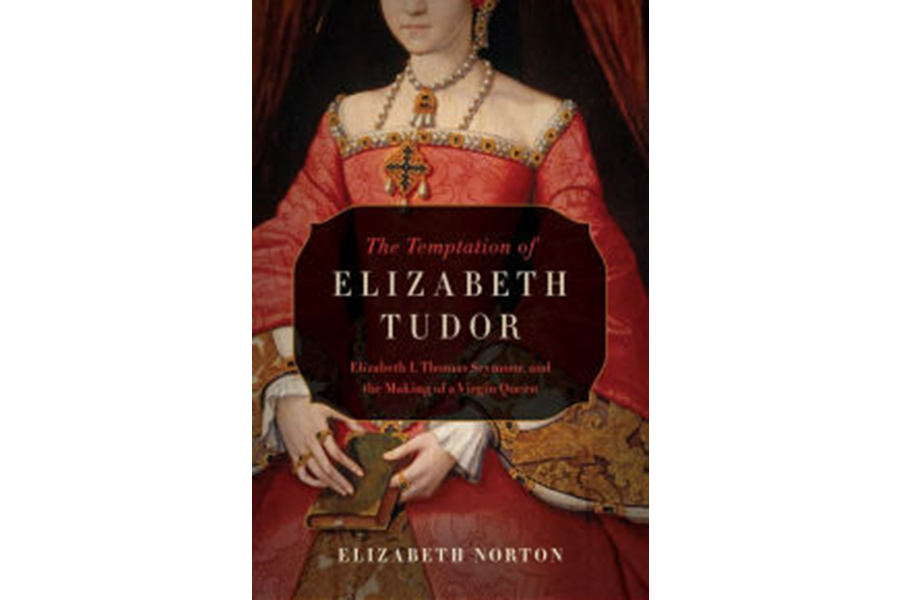'The Temptation of Elizabeth Tudor' explores Tudor intrigue with knowledge and nuance
Loading...
When King Henry VIII died in 1547, the succession went to his longed-for only son Edward, who was crowned at the age of nine and ruled for six years unknowingly surrounded by his successors. Since he was still a boy, the actual rule of the country was undertaken by a council of Regents led by one of his uncles, Edward Seymour, the Duke of Somerset, who became Lord Protector. Also on the council was Edward's younger brother Thomas, because when Henry had married shy, quite Jane Seymour in 1536, he'd taken the whole Seymour clan of Wolf Hall into his Court. And despite its title, the latest book by prolific Tudor historian Elizabeth Norton, The Temptation of Elizabeth Tudor, is as much about the political machinations of the Seymours and their friends and enemies as it is about the rumored romantic dalliances of a young princess.
Norton explains those machinations with as much knowledge and nuance as any historian has done since A. F. Pollard a century ago; Norton's book is racier than Pollard's venerable masterpiece "England Under Protector Somerset," and with good cause: These were racy times, and the Seymour brothers were playing for the highest stakes.
As Norton makes clear, they had very different temperaments. Edward was intelligent and reserved, almost cold, while Thomas was impulsive, rash, and enormously charismatic. When they were both installed on the Regency council, Edward concentrated on consolidating his power through politics and behind-the-scenes alliances. Thomas, even more ambitious than his brother, took a more direct approach: he tried to woo and bed his way to power.
He first set his sights on Jane Grey, but her father balked a bit at the idea, since in 1547 she was only nine. The Princess Mary, the daughter of King Henry and Queen Catherine of Aragon, was 30 at the time, and when Thomas turned his attentions to her as a potential wife, his brother tried to reason with him, pointing out that “neither of them was born to be king, nor to marry king's daughters.”
A natural third choice was his old friend and lover, the dowager Queen Catherine Parr, whom he soon married – in secret, since he knew the Council would never agree to his becoming the husband of a queen. While the couple lived apart, they exchanged letters and met clandestinely – a circumstance that tempts Norton to add dramatic color to her contemporary accounts. “In the early hours of a morning, as the spring sky was just beginning to lighten over Chelsea, a cloaked figure would make her way through the damp grass, intent on being unseen,” she writes of one such encounter. “Reaching the gate at the edge of the field, she would listen for footsteps, and on hearing them open the gate, before slipping back with her visitor to the smart brick manor house.”
It was in the household of Queen Catherine that Thomas encountered yet another target of his lust and avarice: 13-year-old Princess Elizabeth, who was living in the Queen's care along with her governess, Kate Ashley. Later gossip featured Thomas surprising the girl in her bed, flirting with a suggestive aggression that eventually prompted Catherine Parr to send Elizabeth away to the house of Sir Anthony Denny, whose wife was Kate Ashley's sister. Catherine died in January of 1548 of complications due to bearing Seymour a daughter, and as Norton somewhat breathlessly recounts, “For Thomas Seymour, the death of his wife threw him into a state of grief and confusion. It also changed everything for him. At a stroke, he was once more England's most eligible bachelor.”
That was the sum of the “temptation of Elizabeth Tudor” that Elizabeth Norton has in mind. A handsome older man flirted with her when she was a teenager, she perhaps flirted back, and her guardian sent her away before anything worse happened. When Kate Ashley was later locked in a freezing cell in the Tower of London and interrogated about the matter, she could attest to nothing more, and Elizabeth herself, when questioned, stubbornly insisted that she'd had no more than a cursory relationship with the man she assessed as having “much wit and very little judgment.” When Thomas Seymour was executed in March of 1549, it was for treason, not scandal: He'd taken advantage of his brother's absence in Scotland to organize an insurrection, and he'd attempted to kidnap young King Edward.
Norton's suggestion that it was in reaction to “the man who had nearly seduced her” that Elizabeth and her counselors adopted her untouchable Virgin Queen persona makes far too much of her chosen childhood incident, no doubt for dramatic purposes. And her book is indeed dramatic – and shrewd in its analysis of the marriage-politics swirling around the Court of Edward VI. Elizabeth showed fine self-possession when scandal briefly swirled around her, yes, but as an account of the temptations of Thomas Seymour, Norton's book could scarcely be bettered.








